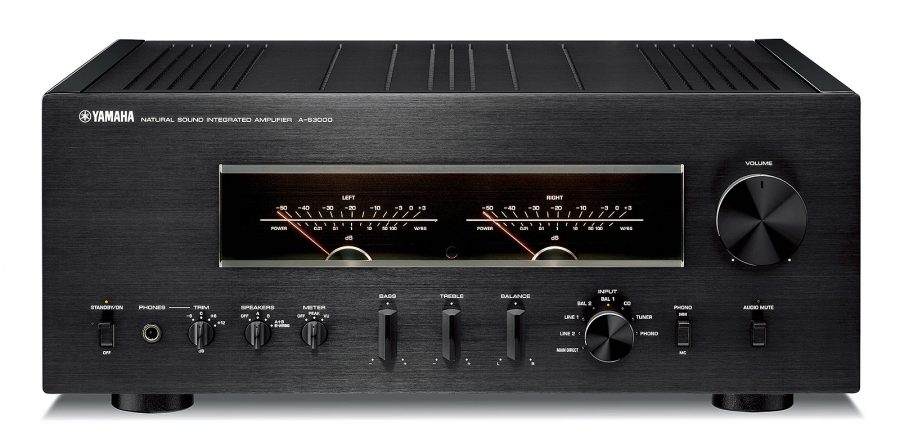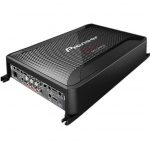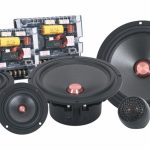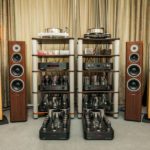A modern music lover will give half the kingdom for a good amplifier, if, of course, he has it. It would seem that here you have active computer speakers - plug in the source and enjoy. However, the catharsis does not work out ... - the sound comes out mediocre ... And for those who have never heard hi-fi equipment play, it is even difficult to explain how much. Fortunately, lovers of good music are now more and more advanced, and not royal inheritance is being asked for sensible electronics.

Content
So why do you need an amplifier?
What is so magical about making a sound amplifier for speakers, once considered the heart of an audio system? Among the million different answers, the most obvious one begs. It increases signal strength. It is no secret that any information in modern technology is transmitted mainly through electrical vibrations. Both digital and analog devices do work only after receiving information on their unit from a neighboring, or from another device. So they are friends.
At the output of the player, the electrical vibrations are always very weak, and although they contain all the necessary information for playback, they are not able to do serious work. Such a whisper is unacceptable to any self-respecting speaker. Each speaker, each speaker awaits adequate power, and, connected to the music transmitting brain, they “starve”. In such conditions, they sound slurred and inexpressive.
Here our hero comes to the rescue - an amplifier of sound power. A good amplifier enriches, prepares sound for acoustics and, connected to the mains, infects the speakers with its energy through line outputs. As they say, a completely different song begins.
Without a doubt, the twenty-first century is contributing to the increase in machine diversity: amplifiers have now become very different from each other. Nevertheless, it is possible to make a fairly digestible classification, which will help to better navigate them.
Types of Amplifiers
So, there are three types of equipment that makes audio more powerful and louder:
Preliminary. If a device, such as a microphone, is dealing with a poor sound source, the amplifier processes and improves information about it, adding power.
Terminal. Actually, it deals only with its direct duties - enhances the sound. Can be seen in recording studios among other professional equipment.
Integral. Mix of the two preceding. The most common system available in stores. Like any combined solution gives a slightly reduced sound quality compared to specialized amplifiers. But it wins in price and versatility.
Distinguish equipment and method of signal transmission:
Analog amplifier. It works with the electrical vibrations that it receives from the player, increasing their energy characteristics. A digital converter is required to connect to digital technology.
Digital amplifier. Converts a digital signal to an analog “intelligible” speaker at the output and adds power to it.
Amplifier Classes
Transistors also work differently - elements that increase the signal strength inside the amplifier. Their species division on this basis is so diverse that it is easier to focus only on the most basic and fundamental differences. Better - without delving into the intricacies of the operation of the radio component and without explaining its device, pay attention to the operational characteristics inherent in the respective classes.
Amplifiers of class A, B, AB, H and their other derivatives.Although they differ in the time and degree of opening of the transistors for passing current into the circuit, they operate in basically the same way. The main problem for all devices of this type, arising at the initial moment of current transmission, nonlinear distortion of the input signal. Everything in the design of this type of equipment is aimed at combating them. This leads to a decrease in efficiency and serious heating. This implies a serious increase in size with increasing power - for a large device, and the tightness of the sound from its lack - if the device is small. Class A is considered the most accurate and least susceptible to noise generation and, as a result, has the least performance.
Class D amplifiers. The transistors in them work like keys, open instantly and immediately pass current. And this leads to a complete absence of nonlinear distortion. In short, this type of amplifier is the exact opposite of the previous family. Winning in efficiency, they perform poorly when reproducing the sound range, which is especially noticeable in the high-frequency region. For those who are looking for a compact amplifier in a car - this class can be especially interesting.
Also, these devices differ not only in purpose, but also in execution.
On integrated circuits. What is called, cheap and almost angry. It plays colorful, bravura and loud. But lacks the completeness of the picture, lacks depth and softness. In case you like only parades and marches. Thanks to the compact element base, they easily fit in a small case. Often used as a balanced solution for a car. Among such devices are often found, the so-called receivers, performing a number of related functions. For example, Wi-Fi and bluetooth modules can be integrated into them. In a word, a rapidly developing direction. There are expensive models with amazing sound related to the hi-end class.
On transistors. Proven and proven technology. The sound depends on the quality of the transistors. Modern radio components make it possible to achieve a minimum of distortion when playing, a wealth of nuances to easily play dynamic compositions. There are even instances that sound completely unsteady, at home. All of them are quite universal. They can work with any acoustics. Although not everything is clear here. Class A gives the richest range, but sags in efficiency and power, more demanding in the selection of acoustics. Class B or D systems are less finicky. They have teeth with low sensitivity. At the same time, tightness, isolation of the dynamic range will not be felt.
Tube They are often chosen by connoisseurs. Reproduction is warm and natural. Perfectly transmit the timbre of the voice and are able to reveal the entire sound palette of the playing instrument. They show their best performance in tandem with soft speakers based on paper or a material similar in mechanical properties.
Hybrid Recently, especially popular. Here, the lamps process the input signal, and amplification stages on transistor circuits are involved in pumping the columns. The union of “sword and screaming” gives the game warmth, without prejudice to efficiency and allows precise control of acoustics. They are able to "swing" tight speakers with good bottoms.
It should be noted that in this nomenclature there is a tautology that has entrenched historically. Among the above categories of amplifiers, the main and main unit is still a transistor. It is simply executed differently. In devices on integrated circuits - transistors are tightly packed in a tiny piece of silicon, in tube - these are separate triodes in a glass flask. But in general, despite the fact that all these devices are assembled from identical in essence, but differently executed elements, only those in which they represent a separate semiconductor component are called transistor.By the way, in the network there is an erroneous formulation “sound amplifier on a transistor”, which is incorrect because there are a lot of transistors in a modern amplifier, at least one per cascade.






The Yamaha A-S201 is not a Class D amplifier. It is an entry-level Class AB amplifier.
I would add the BARK and BRIG from the USSR of the last century.